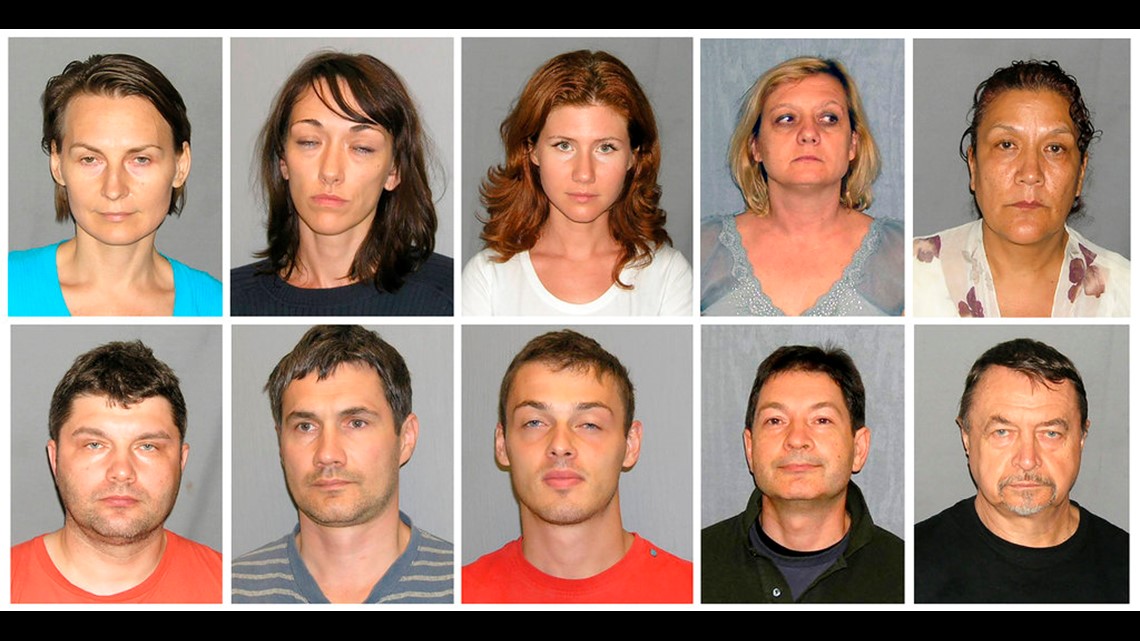Story update Dec. 8, 2022: This story has been updated with the latest developments in the Russian case against WNBA player Brittney Griner.
On Dec. 7, 2022, Russia freed WNBA star Brittney Griner as part of a prisoner exchange, with the U.S. agreeing to release Russian arms dealer Viktor Bout. The exchange took place in Abu-Dhabi, according to U.S. officials and the Russian Foreign Ministry.
Griner was arrested in February, and in August was convicted of drug possession and smuggling. She was sentenced to nine years in prison and fined $1 million rubles, or about $16,700. She was serving her time at a Russian labor camp prior to her release.
In August, VERIFY reported the U.S. had made a deal that would exchange Bout, nicknamed “the merchant of death,” for Griner and another imprisoned American – Paul Whelan. Whelan was arrested in 2018 for spying and is currently serving a 16-year sentence in a Russian labor camp. Whelan was not freed as part of this prisoner exchange, but President Joe Biden said the U.S. “will keep negotiating in good faith for Paul’s release.”
As part of our earlier reporting, the VERIFY team explored the history of prisoner swaps between the U.S. and Russia.
THE QUESTION
Has the U.S. swapped prisoners with Russia before?
THE SOURCES
THE ANSWER
Yes, the U.S. has swapped prisoners with Russia before. The practice dates back to the Cold War.
WHAT WE FOUND
“She’s safe, she’s on a plane, she’s on her way home,” President Joe Biden said from the White House, where he was accompanied by Griner’s wife, Cherelle.
The deal for Griner has been in the works for months.
On July 27, Pentagon Press Secretary John Kirby first confirmed the U.S. was bartering for Griner. He told reporters: “I will say that the President and his team are willing to take extraordinary steps to bring our people home, as we’ve demonstrated with Trevor Reed, and that’s what we’re doing right here. It’s actively happening now.”
In April 2022, U.S. Marine veteran Trevor Reed was brought back to the U.S. in exchange for a Russian drug trafficker. Reed was swapped in Turkey for Konstantin Yaroshenko, who had been serving a 20-year prison sentence in a cocaine-trafficking conspiracy case.
Prior to that, in 2010, the U.S. released 10 Russian spies and in return, the Russian government released three Russians who spied on behalf of the U.S. or the U.K., and one Russian accused of being a double agent working for both Russia and the U.S. According to the FBI, the Russian spies had assimilated into American society (some by using stolen identities).
“They married, bought homes, raised children, and held jobs—all while working for Russia’s Foreign Intelligence Service,” the FBI said. The spy ring was the inspiration for the television show “The Americans.”


Twenty-five years earlier, in June 1985, the U.S. and the then-Soviet Union agreed to the largest-ever prisoner exchange of the time. The U.S. released three spies - one of which was famed Polish spy Marian Zacharski who stole military technology - in exchange for 23 people held by the Russians.
The first major prisoner exchange between Russia and the U.S. was in 1962, with the then-Soviet Union. The exchange took place on the Glienicke Bridge, which at the time linked East and West Germany.
The U.S. released KGB spy Rudolf Abel in return for Air Force pilot Capt. Francis Gary Powers. The KGB was the main security agency for the Soviet Union. After Powers' plane was shot down during a reconnaissance mission, he was captured, sentenced for spying, and held prisoner by the Soviets until his exchange on February 10, 1962.
A biography on Powers from the National Air and Space Museum said: “Although Captain Powers was criticized at the time (some believing he should have died rather than allow himself to be captured), 1998 declassified documents show that he followed orders by maintaining a cooperative attitude, gave out no secret information, and refused to denounce the United States of America. As a result, Russian intelligence gained no vital information from him.”
American Frederic Pryor, a student at the time in East German custody, was also released as part of that exchange.
So, we can VERIFY, there has been a long history of prisoner exchanges between Russia and the U.S.
The Associated Press contributed to this report.

